Install and Configure Active Directory on Windows Server 2022
Active Directory (AD) is a cornerstone of Microsoft Windows Server environments, essential for managing users, computers, and other resources within a network. With AD, administrators can create domain controllers that efficiently handle user accounts, implement group policies, and control access to resources across the domain. This comprehensive guide will walk you through installing and configuring Active Directory on Windows Server 2022, giving you with the tools to centralize and streamline network management.
All these steps can be completed using PowerShell; look out for the PowerShell tips.
180-Day Windows Server Trial
Did you know you can get a 180-day free trial of Windows Server 2022 – Simply download direct from Microsoft.
Active Directory Requirements and Pre-Installation Steps
Before diving into the installation process, let’s ensure your Windows Server environment meets the necessary active directory requirements.
These include:
- Processor: 1.4 GHz 64-bit processor
- RAM: 2 GB or higher
- Disk Space: At least 40 GB of free space on the system drive
- Network Adapter: A network adapter supporting Ethernet, Fast Ethernet, or Gigabit Ethernet
- Operating System: Windows Server 2022
- DNS Server: Configured or available on the network
- Domain Name: A unique and valid domain name
- Static IP Address: Setting a static IP address on your Windows Server is crucial. It ensures a consistent IP for your domain controller, preventing disruptions caused by IP changes.
Static IP Address
To set a static IP address, use the Network and Sharing Center or PowerShell:
Note: Set the IP Address and Default Gateway to your local values
To set a static IP address:
- First, open the Network and Sharing Center.
- Select your primary Ethernet connection. (Usually called Ethernet#1)
- Click on Properties
- Select Internet Protocol Version 4 (TCP/IPv4) from the list.
- Click on Properties
- Enter the IP address, subnet mask, default gateway, and DNS server address.

New-NetIPAddress -InterfaceAlias "Ethernet" -IPAddress "10.1.1.10" -PrefixLength 24 -DefaultGateway "10.1.1.1"It is important to note that the DNS server address should be set to the server’s IP address (127.0.0.1). This will ensure the server can resolve its hostname and prevent issues with the Active Directory installation.
Once the static IP address has been set, you can proceed with the AD installation.
Step 1 – Add the Active Directory Domain Services Role
The first step in installing AD is to use Server Manager to add the Active Directory Domain Services role. To do this:
- Open Server Manager and navigate to “Add roles and features.”
- Click “Next” until you reach the “Server Roles” screen.
- Select “Active Directory Domain Services” and click “Next.”
- Review the selected features and click “Install.”
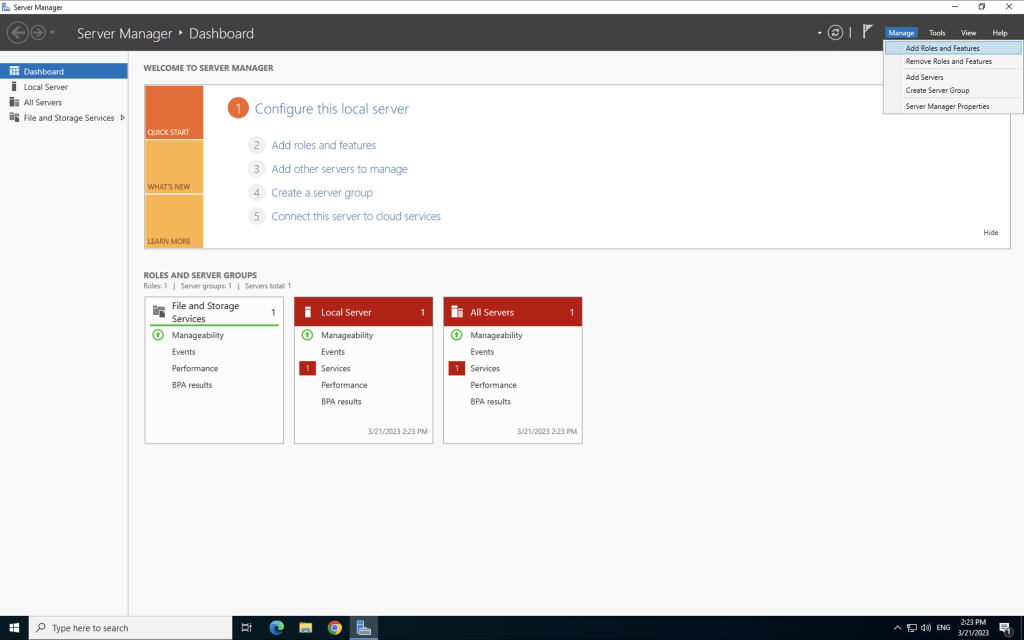
- Click Next until you reach the Server Roles screen. Select Active Directory Domain Services and click Next.
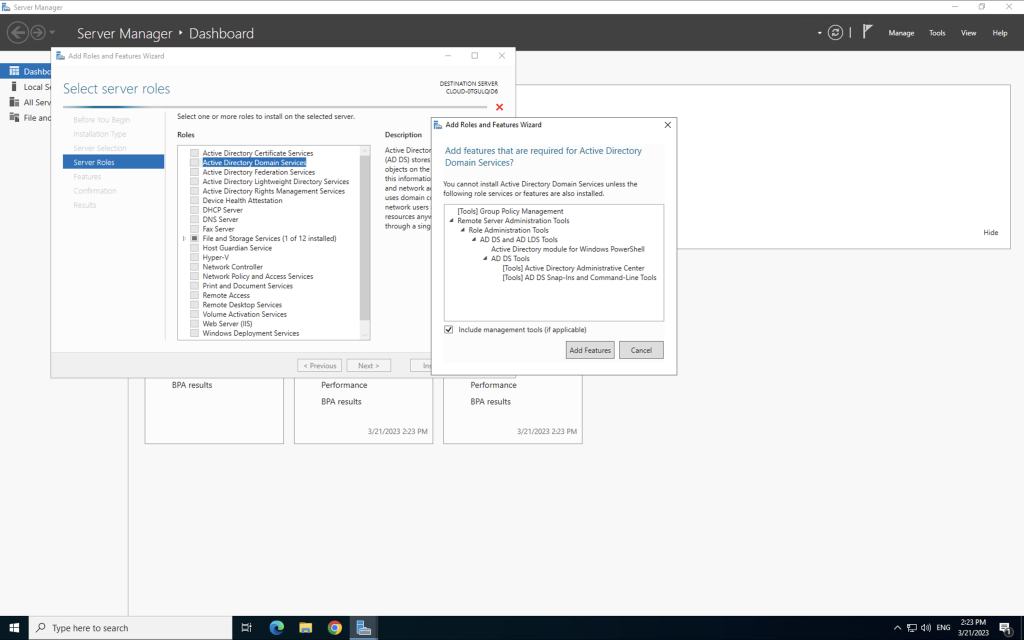
- Review the features and click Next again. Finally, click Install to begin the installation process.
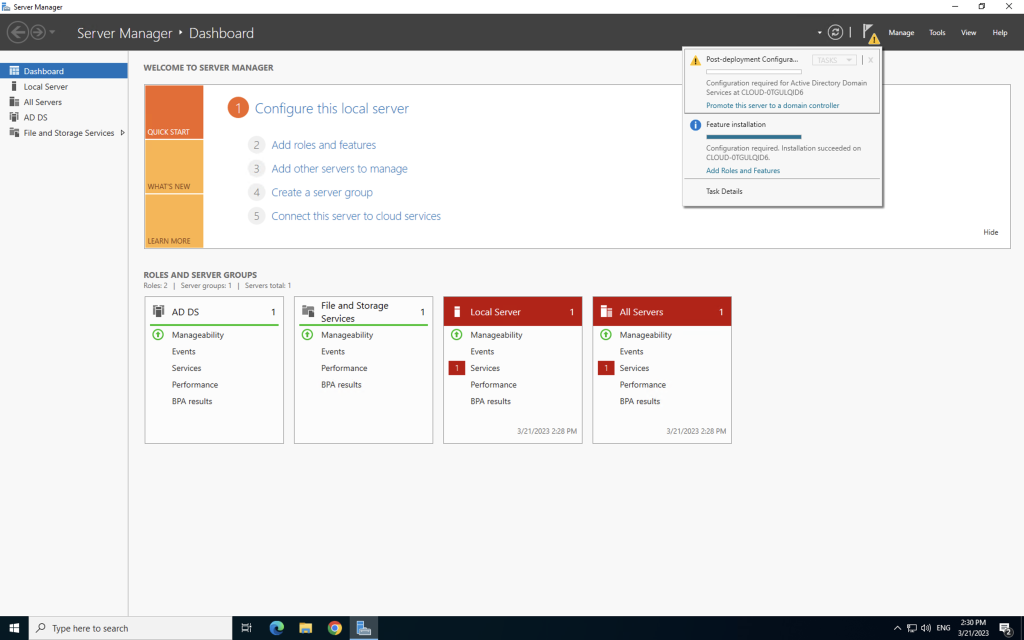
Install-WindowsFeature -Name AD-Domain-Services, RSAT-AD-Tools -IncludeManagementToolsThis command not only installs the AD Domain Services role but also includes the Remote Server Administration Tools (RSAT), giving you the tools to manage Active Directory from other computers within the domain.
Step 2 – Install Active Directory
After installing the Active Directory Domain Services role, you must promote the server to a domain controller.
To do this,
- Open Server Manager
- Select the Active Directory Domain Services role from the Dashboard.
- Click on the Configuration Required link to open the configuration wizard. Follow the prompts to configure the necessary settings, such as the domain name, domain functional, and forest functional levels.

Install-ADDSForest -DomainName "turbogeek.co.uk" -DomainNetbiosName "TURBOGEEK" -DomainMode "WinThreshold" -ForestMode "WinThreshold" -InstallDns -NoRebootOnCompletionStep 3 – Setup the Domain
After selecting Promote this server to a domain controller, you will see the screen below. Fill in the information that’s relevant to you.
- Complete the Deployment configuration.
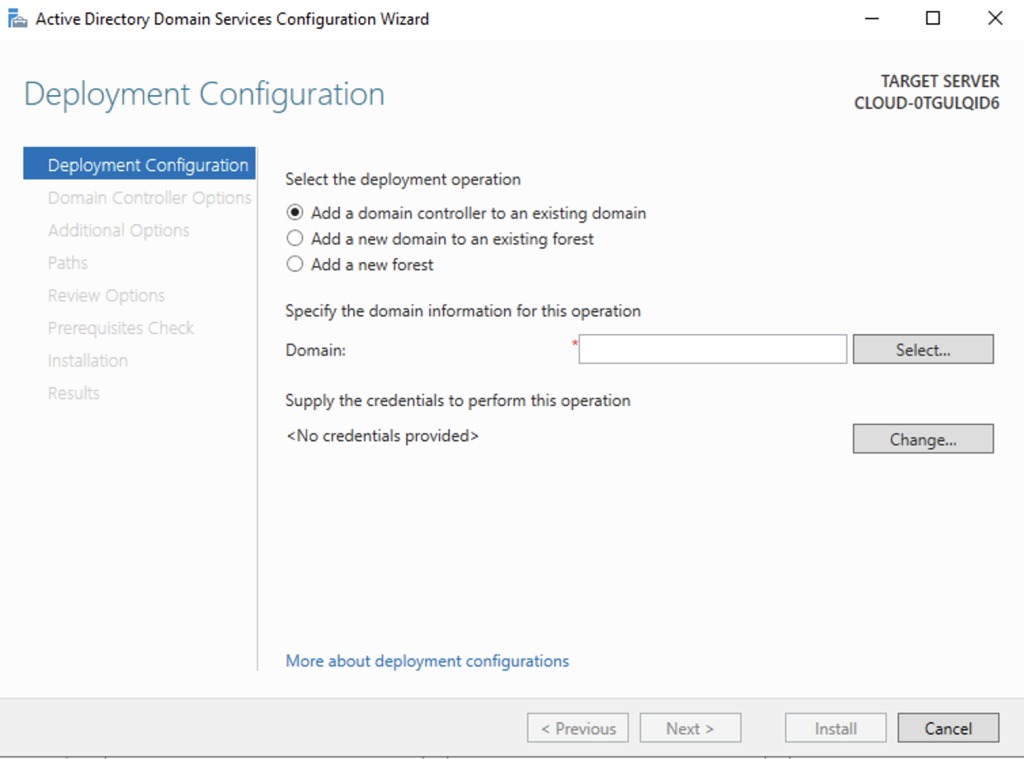
- Add the domain controller to an existing domain, add to an existing forest, or create a new one. In this example, I am creating a new forest called turbogeek.co.uk
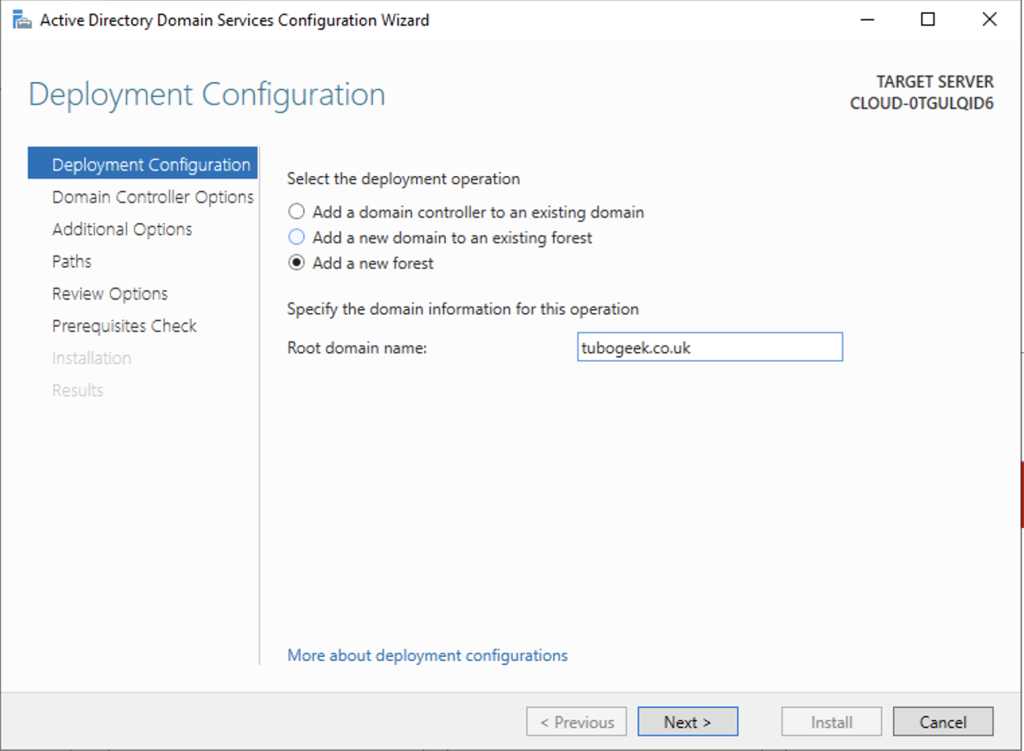
- Set the Domain Functional Level and set a domain administrator password. I have also selected my domain controller as the DNS server and Global Catalog.To find out more about Domain Functional Levels, click here.
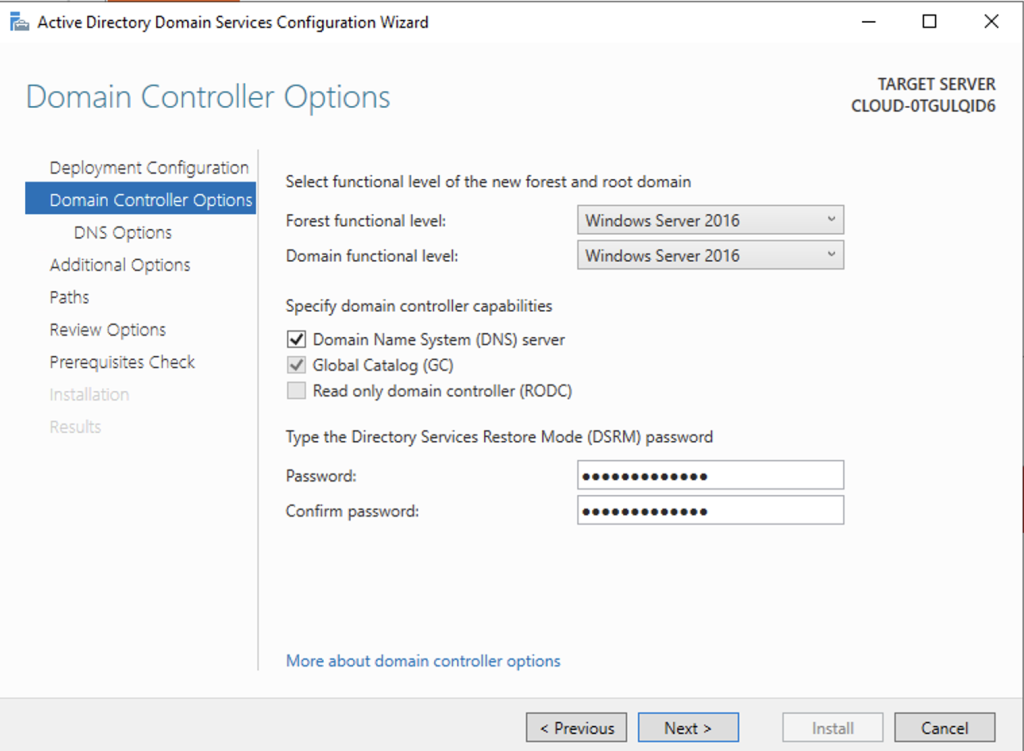
If required, you can configure your DNS settings on the next page. In my example, I am skipping this warning because my domain controller will be the DNS server too. It may be different in your domain.
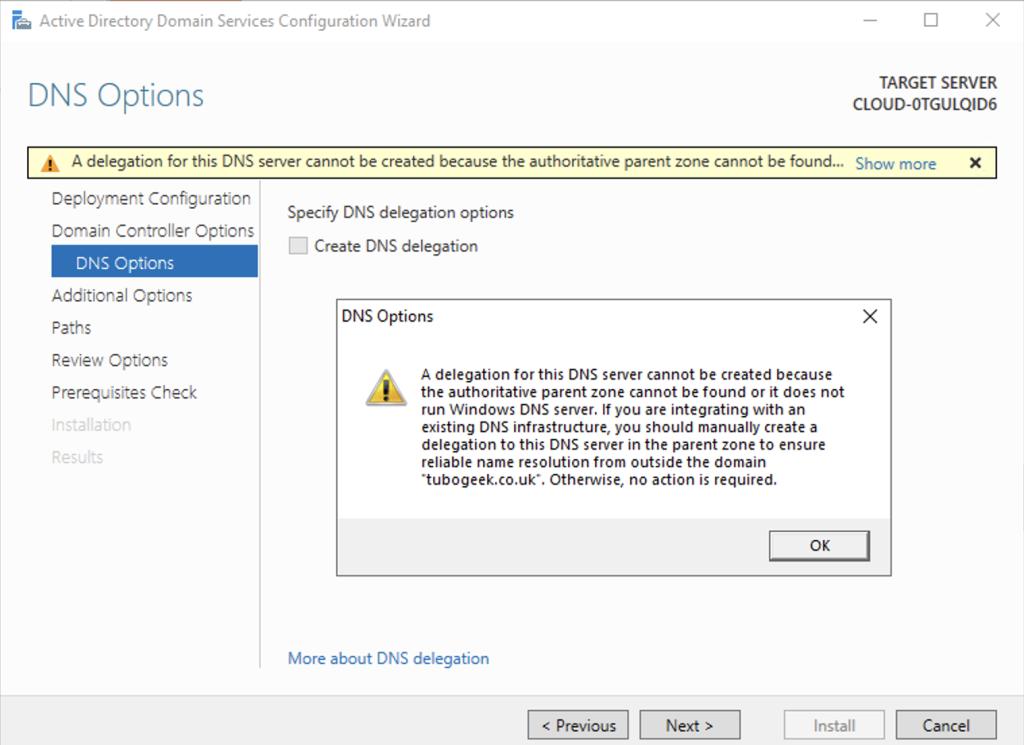
- The installer should automatically populate the NetBIOS name on the next screen.
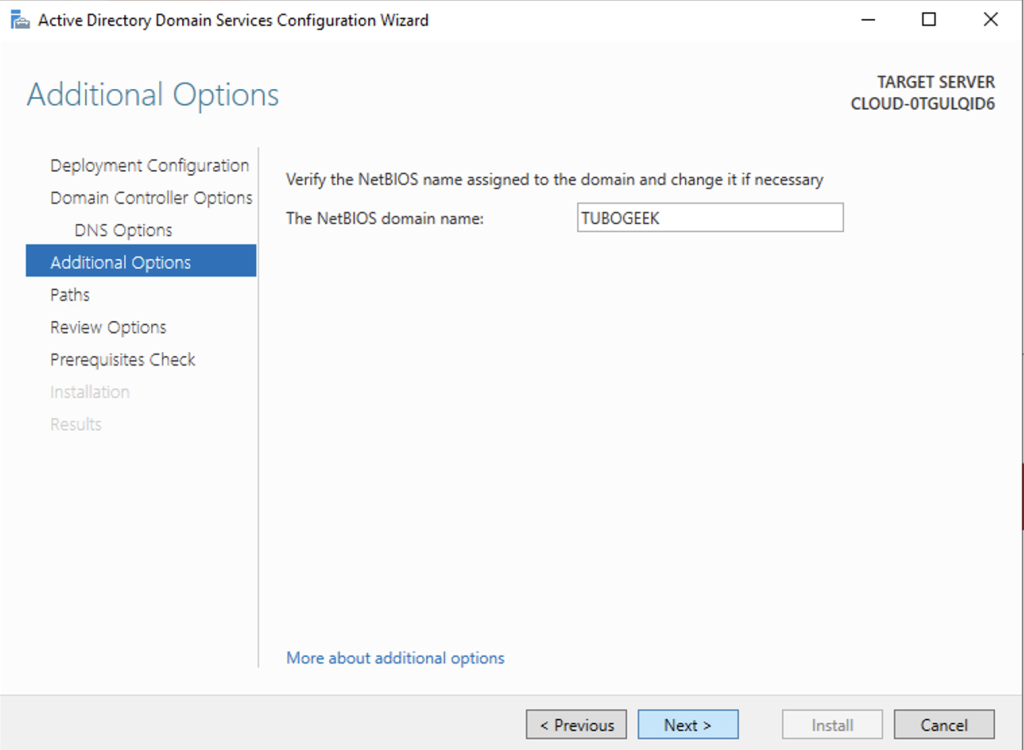
- Next, set the location to save the AD database, log files, and SYSVOL. In this example, I will leave these values as the default.
- You may want to move NTDS and SYSVOL to separate disks in a production environment. This can improve performance on very large AD deployments.
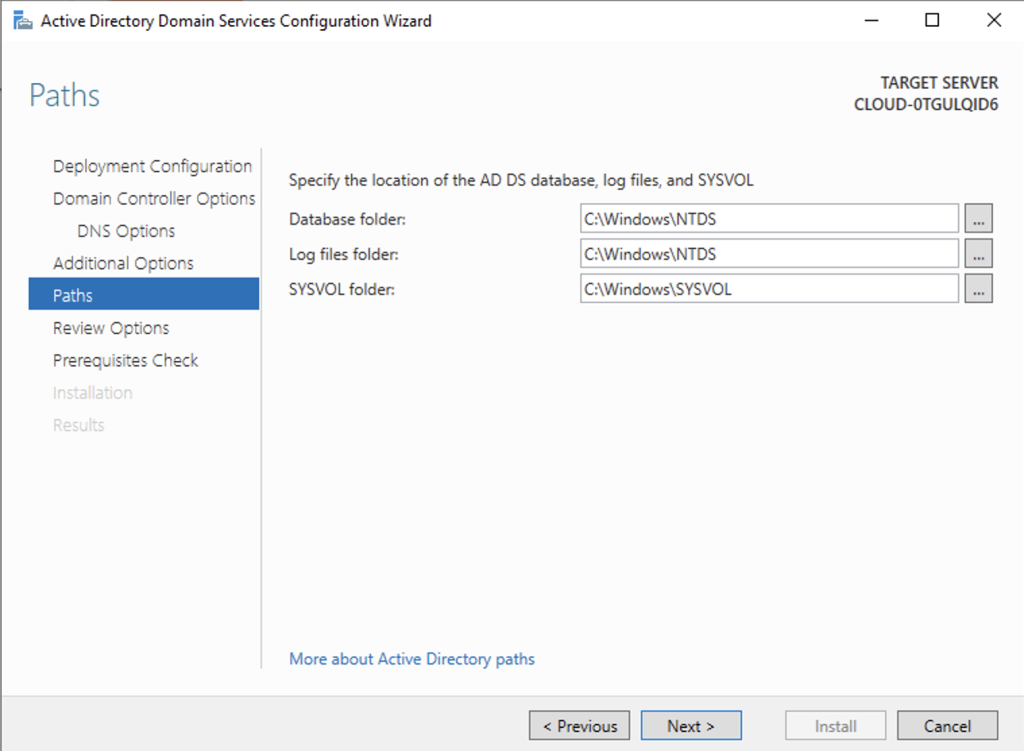
- Click next on the Review Options and Prerequisites Check pages.
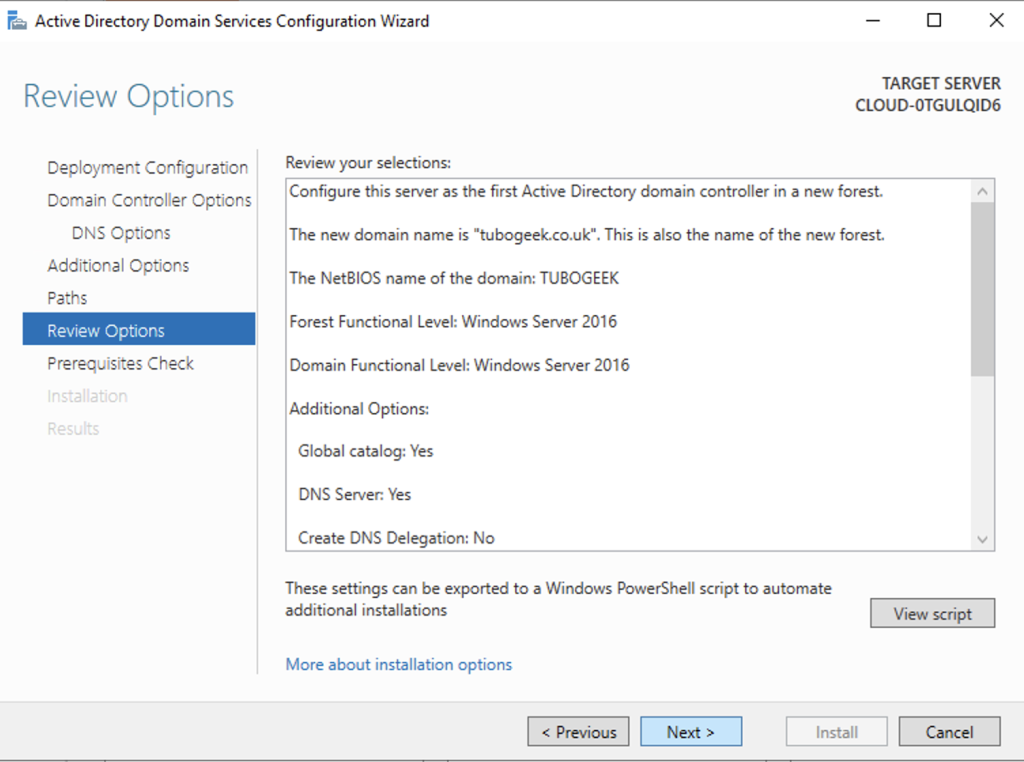
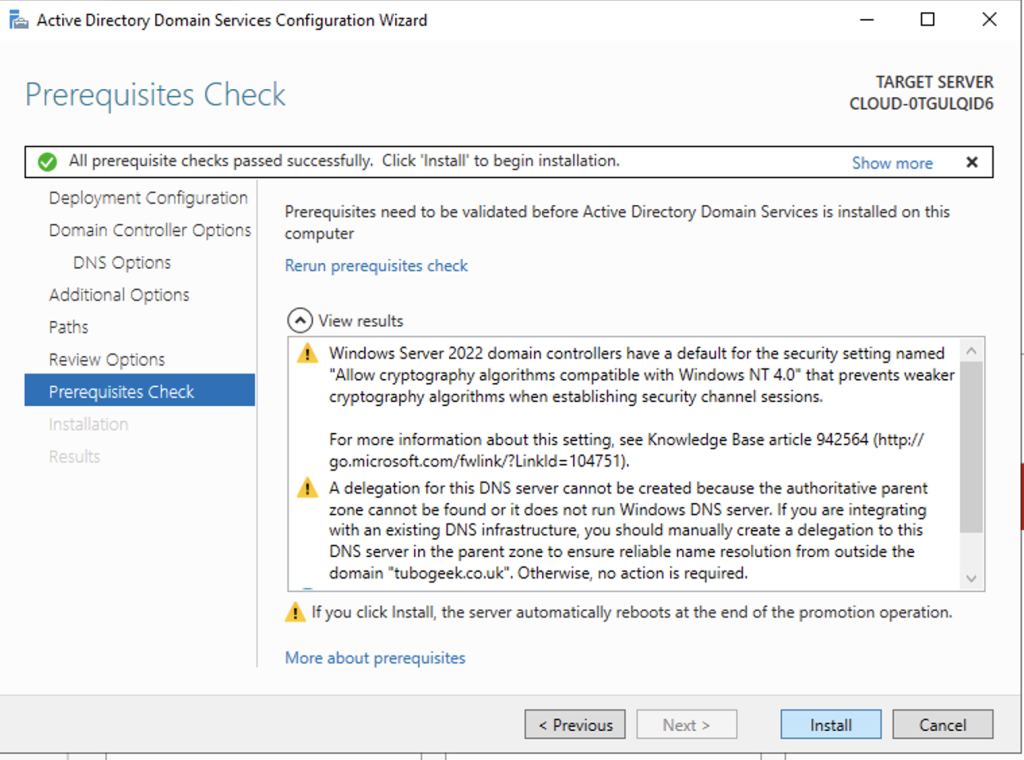
- Once the installer is running, give it a few minutes to complete the installation.
Step 4 – View Active Directory Users and Computers
- Then, from Server Manager, Open “Active Directory Users and Computers
- Equally, you can type dsa.msc from the command prompt or Powershell CLI
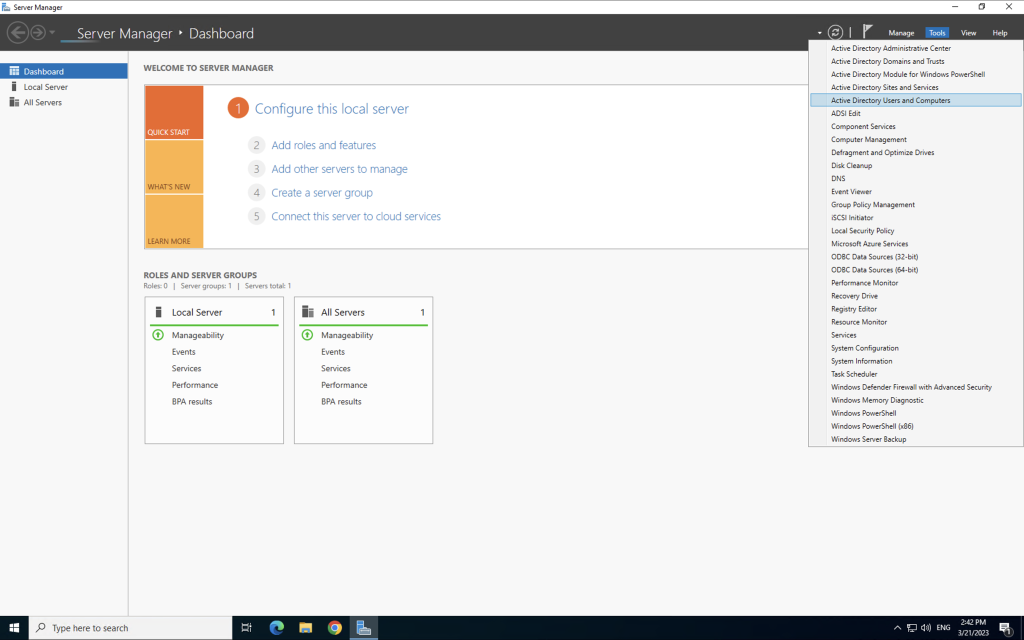
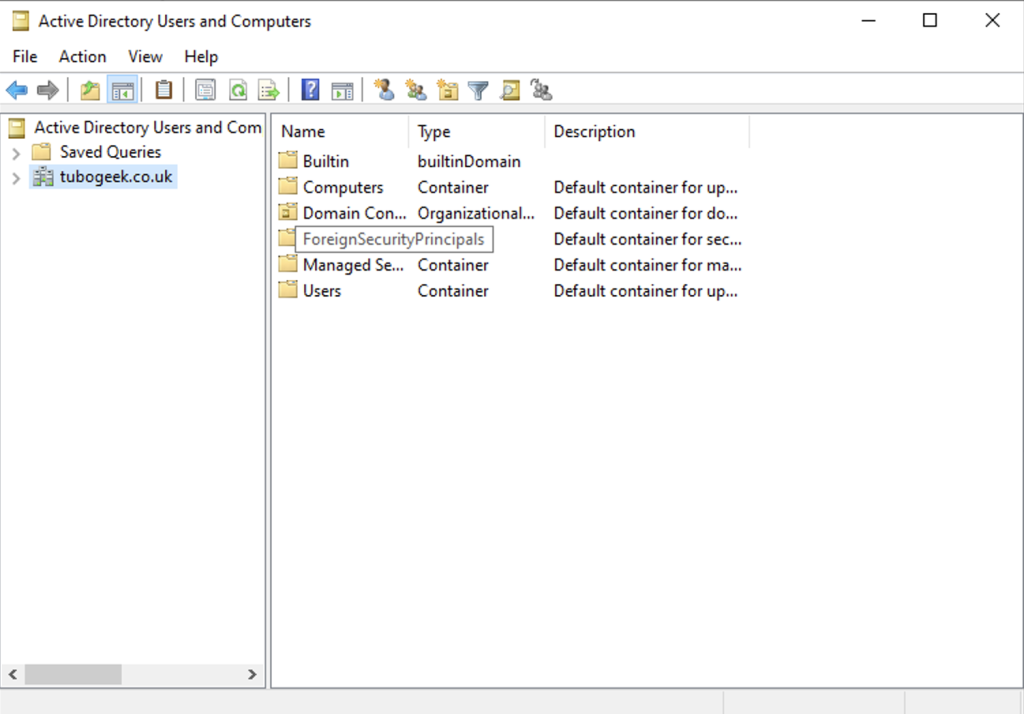
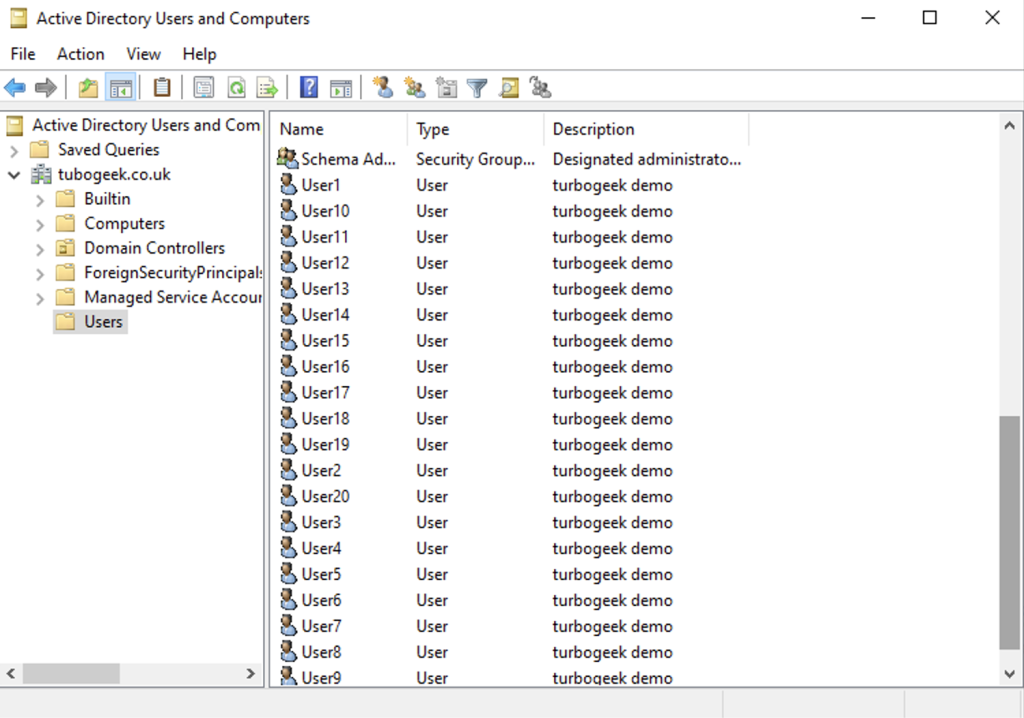
Installing AD on Windows Server 2022 is crucial in managing users, computers, and resources in a network environment. By following the steps outlined in this guide, you can ensure that the installation is successful and that your network environment is secure and easy to manage. Remember to verify the successful installation and access AD tools to ensure everything works correctly.
Windows Server Hints and Tips
Here are some hints and tips for Windows Server 2022:
Use Server Core installation:
Server Core installation provides a minimalistic interface with less disk space usage and fewer vulnerabilities, making it more secure and easier to manage.
Enable Windows Admin Center:
Windows Admin Center is a web-based tool with a graphical interface for server management tasks. It’s free and easy to install, making it a valuable addition to any Windows Server 2022 environment.
Use the latest security features:
Windows Server 2022 has many built-in security features, such as Credential Guard, Device Guard, and Just Enough Administration (JEA). It’s recommended to enable these features to enhance the server’s security posture.
Consider using Azure Hybrid Benefits:
If you have an Azure subscription, you can use the Azure Hybrid Benefits to save money on your Windows Server 2022 licensing costs. This benefit allows you to use your existing Windows Server licenses to run virtual machines in Azure, reducing the need to purchase new licenses.
Use Storage Spaces Direct:
Storage Spaces Direct is a software-defined storage solution that allows you to use commodity hardware to create highly available and scalable storage solutions. It’s easy to set up and manage and can be a cost-effective alternative to traditional storage arrays.
Use the Windows Server Update Services (WSUS):
WSUS is a built-in feature allowing you to manage and deploy Windows Servers and other Microsoft product updates. Therefore, using WSUS can help you maintain the server’s security and stability by keeping it up-to-date with the latest patches and updates.
Enable Remote Desktop Protocol (RDP) with caution:
RDP is a convenient way to access the server remotely but can also be a security risk if not configured correctly. It’s recommended to use Network Level Authentication (NLA) and limit the number of users accessing RDP.
These are just a few hints and tips for Windows Server 2022, and there are many other features and best practices to explore. It’s important to stay informed and up-to-date with the latest developments and security updates to ensure the server’s optimal performance and security.
FAQ on Installing Active Directory on Windows Server 2022
What is Active Directory?
Active Directory is a Microsoft service that manages identities and authentication for resources, including users, computers, and applications. It simplifies the management of user accounts and enables centralized management of security policies.
What are the system requirements for installing Active Directory on Windows Server 2022?
To install Active Directory on Windows Server 2022, your server must meet the minimum hardware and software requirements. These include a 64-bit processor with a minimum of 4 GB of RAM and 64 GB of available disk space.
Q: Can I install Active Directory on a Windows Server 2022 Core installation?
A: You can install Active Directory on a Windows Server 2022 Core installation. However, the process is command-line based, and you will need to use PowerShell or the Sconfig tool to install and configure Active Directory.
Q: How do I install Active Directory on Windows Server 2022 using the Server Manager?
A: To install Active Directory using the Server Manager, launch the Server Manager and click on “Add roles and features”. Then select the “Active Directory Domain Services” role and follow the wizard to complete the installation.
Q: How do I configure Active Directory after installation?
A: After installing Active Directory, you must configure it by running the Active Directory Domain Services Configuration Wizard. This wizard will guide you through the process of configuring your domain, including setting up DNS, creating a domain controller, and configuring forest and domain functional levels.
Q: Can I install Active Directory on Windows 2022 Nano Server?
A: You cannot install Active Directory on a Windows 2022 Nano Server. Nano Server is a lightweight installation option that does not include the Active Directory Domain Services role.
Q: What is the difference between a domain and a forest in Active Directory?
A: A domain is a logical group of computers, users, and devices with a common security database. A forest is a collection of domains with a common schema and trust relationship. A forest can contain one or more domains.
Q: Can I add a Windows Server 2019 domain controller to a Windows Server 2022 domain?
A: You can add a Windows Server 2019 domain controller to a Windows Server 2022 domain. However, you must ensure that the forest and domain functional levels are compatible with Windows Server 2019.
Q: Can I install Active Directory on a virtual machine running on Windows Server 2022?
A: Yes, you can install Active Directory on a virtual machine running on Windows Server 2022. However, you must ensure that the virtual machine meets the minimum hardware and software requirements for installing Active Directory.
Q: What are some best practices for securing Active Directory on Windows Server 2022?
A: Some best practices for securing Active Directory include enforcing strong passwords, limiting administrative access, enabling auditing, and monitoring logs for suspicious activity regularly. You should also keep your server up-to-date with the latest security patches and updates.
Q: What is the role of the Domain Admins group in an Active Directory environment?
A: The Domain Admins group is a powerful group within Active Directory that grants its members full administrative access over all domain controllers, servers, computers, and user accounts within the domain. This includes the ability to reset passwords, modify security settings, and install software. It’s crucial to carefully manage membership in this group to maintain the security and integrity of your Active Directory environment.
Q: Can I have multiple domain controllers in my Active Directory environment? Why would I do this?
A: Yes, you can have multiple domain controllers within a single domain. This provides redundancy and fault tolerance, ensuring that if one domain controller fails, others can continue to authenticate users and provide access to resources. It also helps distribute the workload and improve overall performance, especially in larger organizations with numerous users and computers.
Q: Is there a difference between installing Active Directory on a physical server versus a virtual server?
A: While the installation process is generally the same for both physical and virtual servers, there are some considerations. Virtual servers may have specific requirements for allocating resources like CPU, RAM, and disk space. Additionally, ensure your virtualization platform supports Active Directory and that you follow best practices for virtualized domain controllers.
Q: How does Active Directory integrate with other Microsoft products?
A: Active Directory seamlessly integrates with a wide range of Microsoft products, including Exchange Server for email, SharePoint for collaboration, and Skype for Business for communication. This integration provides a unified authentication mechanism, single sign-on (SSO) capabilities, and centralized management of user accounts and security policies across the entire Microsoft ecosystem.
Q: Can Active Directory authenticate users on older Windows Server versions like Windows Server 2008 and 2008 R2?
A: Yes, Active Directory can authenticate users on older Windows Server versions, including Windows Server 2008 and 2008 R2. However, it’s important to note that these older operating systems are nearing or have reached the end of their support lifecycle. Consider upgrading to a newer version of Windows Server to benefit from the latest features, security updates, and improved performance.
Q: How does Active Directory ensure the accuracy and integrity of DNS records?
A: Active Directory Domain Services (AD DS) integrates with Domain Name System (DNS), providing a dynamic and centralized way to manage DNS records. When changes are made to objects in Active Directory, such as adding a new computer or modifying a user account, the corresponding DNS records are automatically updated, ensuring that clients can locate resources on the network reliably.
Q: What are organizational units (OUs) in Active Directory, and how are they used?
A: Organizational units (OUs) are containers within Active Directory that allow administrators to logically organize and manage objects, such as users, computers, and groups. OUs can be used to delegate administrative control, apply group policies, and simplify the management of complex Active Directory environments.
Feel free to ask if you’d like more Q&A or have any other questions!
Want to check out Windows Server 2025? Why not use our guide to get up and running on Microsoft’s latest Operating System.
Thanks for taking the time to read this article. if you have any questions or feedback, please write in the comment section below.


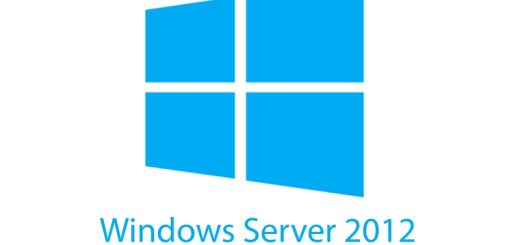
3 Responses
[…] like those shared, emphasize the importance of maintaining and troubleshooting VSS, especially in older operating systems. The provided troubleshooting steps for both 32-bit and 64-bit systems offer a comprehensive guide […]
[…] Microsoft is not renaming local Active Directory installations on Windows Server. The name of the product is still Windows Server Active Directory. […]
[…] detailed guide explains the step-by-step process of upgrading Active Directory from 2003 to 2016. Before you start, please ensure you have updated Windows Server 2003 to the very […]